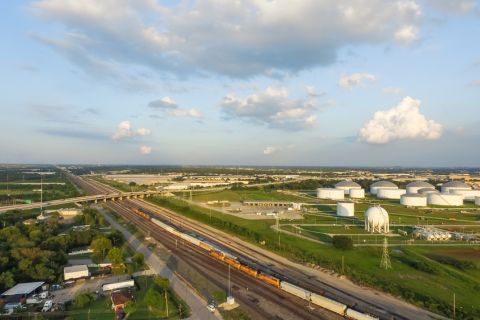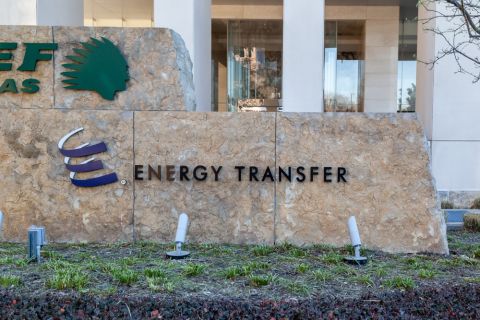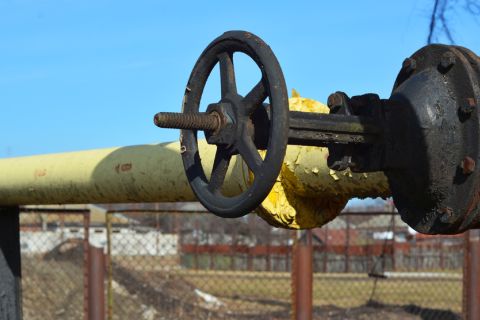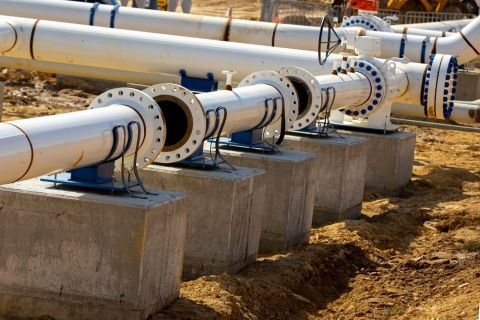With offshore drillers in the midst of a rig-building bonanza as they try to keep up with operators’ demands for more high-tech units and new discoveries increasingly being made beyond the 1,220-m (4,000-ft) mark, deepwater project spending is on a growth curve that just a few short years ago was believed to be potentially unsustainable.
Fueled by today’s consistently high price of a barrel of oil – but not dependent on it – new projects are being brought onstream at a rate that is expected to see production from deepwater fields make up more than 13% of global liquids output by 2040. The hike in activity is being driven by an increasing majority of exploration drilling activity taking place in water depths beyond 1,220 m, with 46% of offshore wells to be drilled beyond that depth between 2013 and 2017, up from 34% in the previous four-year period.
The success rate also is growing accordingly. Approximately 35% of new finds are being made beyond that depth, up from 25% in 2005. There were a record number of discoveries (52) made last year in more than 1,220 m of water.
Deep water dominates
Despite the reality of increased recent competition for project funds now coming from the astonishing boom in onshore unconventional plays in the US, most observers believe that deep water – itself described as “unconventional” just 10 years ago – will soon become the offshore industry’s dominant sector.
Speaking at the 2013 Offshore Technology Conference in Houston, Occo Roelofsen, director of the global oil and gas practice at McKinsey & Co., highlighted the offshore industry’s success in pushing its average water depth 100 m (328 ft) deeper every year over the past 10 years. “We predict that over the coming 10 years the industry will see its deepwater liquids production grow by 7% over that period,” he added.
Another speaker, Steve Thurston, Chevron’s vice president of deepwater exploration and projects, said, “The fact is that what is normal today was considered ‘impossible’ 10 years ago. And what is ‘impossible’ today will be normal 10 years from now. So in terms of technology, we need it all, from top to bottom.”
$272 billion capex
Exclusive market data provided by analyst Infield Systems outlines a forecast global deepwater capex figure for the five-year period from 2013 to 2017 totaling more than US $272 billion.
Deepwater capex as a percentage share of overall global offshore capex will soar from 38% in 2012 to more than half (53%) in 2017, according to Infield. Deepwater reserve additions are expected to remain a marginal proportion of overall global production (rising from a 7% cumulative share of world reserves in 2012 to an expected 10% share by 2017). In capex terms the more technically challenging, high-specification deep-water market requires considerably higher spending than its shallow-water counterpart.
The capex growth, while remaining centered on the “deepwater triangle” of Brazil, West Africa, and the US Gulf of Mexico, also is expected to be supported by less traditional areas of development, including Southeast Asia, Australasia, and Europe, according to Infield’s latest “Global Perspectives Deep and Ultra-deepwater Market Report to 2017” (which specifies deep water as starting at a water depth of 500 m [1,640 ft]).
Regional hotspots
Brazil’s development boom is expected to lead the global deepwater market to 2017, with spending to center on the giant Lula and Franco developments. However, with Brazil’s economy growing at an unprecedented pace, the following period also is expected to be pivotal in the development of the country’s offshore reserves and a testing time for its state oil company Petrobras, according to the analyst. The GoM deepwater market is expected to continue to gain in strength post-Macondo, with activities expected to be led by Shell. The major will have a 24% market share of capex on deepwater developments, with the ultra-deep Stones and Appomattox projects expected to be central to this investment spend.
Offshore Africa, Angolan developments are expected to be at the forefront of deepwater investment, with the country forecast to hold a 52% share of the regional capex. Here, key prospects anticipated to command significant expenditure include the Kaombo I and II fields; Lucapa, and BP’s Palas, Astraea, and Juno fields.
However, while West Africa is expected to remain the primary driving force of deepwater development within the region going forward, toward the end of the period the increasing surge in deepwater activity off East Africa is expected to continue, with development of the giant Prosperidade complex off Mozambique to draw particular industry attention and substantial expenditure.
Offshore Asia, key fields anticipated to enter production during the 2013 to 2017 period include Liwan offshore China; Shell’s Gumusut-Kakap development off Malaysia; and the Gendalo-Gehem project, developed by Chevron offshore Indonesia, which is expected to start producing in 2016.
Growing diversity
Over the period Infield also expects a growing diversity in deepwater production offshore Asia, with new areas including Brunei, Myanmar, and Sri Lanka.
In Europe deepwater demand is expected to increase substantially compared to the relatively quiet time seen in recent years, with the Aasta Hansteen project offshore Norway expected to be the third most capital-intensive deepwater development globally in the forecast period. In operator terms, Statoil is expected to form the largest market share going forward, with other key players expected to include Chevron (directing significant spending toward the Rosebank development west of Shetland) and Gazprom with its South Stream project also expected to invest heavily within the European deepwater market going forward.
Prospects offshore northwestern Australia have attracted considerable attention in recent years, added the analyst, with capex commencing on the Chevron and ExxonMobil-operated Greater Gorgon area in 2011. The deepwater market off northwestern Australia is expected to increase its global market share from 1% to 3% over the report period, with ExxonMobil expected to lead development spend as a result of significant expenditure on the remote Jansz field and the recently approved Scarborough development.
The Middle East, while remaining the smallest market for deepwater development expenditure, is expected to see increasing investment by Noble Energy. Noble’s giant gas developments offshore Israel in the eastern Mediterranean Sea are expected to demand the largest proportion of the region’s spending over the period. Within the Caspian area BP also is expected to continue the phased development of the deepwater section of the Shah Deniz field offshore Azerbaijan.
Floaters in focus
Another key indicator for deep water is the capex level on floating production systems, which is forecast to grow by 18% globally between 2013 and 2017. Infield said that the compound annual growth rate compares to a figure of 10% for the prior five-year period. The number of floating production installations in 2017 is expected to be 95% higher than in 2008. The growth in both capex and installations will be driven largely by an increase in the number of developments to monetize gas in remote and nearly exclusively deepwater locations as well as by an increasing focus on optimizing production from ultra-deep developments.
According to Infield, when looking at floating production system developments by water depth, the increasing dominance of deep and ultra-deepwater capex over the forecast period continues. Shallow-water capex is likely to peak in 2016, whereas ultra-deep capex is expected to remain on an upward trajectory to 2017.
The deep and ultra-deep oil-focused developments in Africa and Latin America, combined with the gas-focused developments off Australasia, are expected to account for almost 59% of total floating production system capex over the period.
When it comes to floating production systems, it is Petrobras that dominates – the company has a total of 25 production units due for startup between 2013 and 2017, with another 13 due to come onstream by 2020. Since 2000, Infield said, the trend for floating platform installations in water depths of 500 m and greater has seen Brazil consistently hold a 35% market share of capex in these water depths.
Subsea spending
Ultra-deep water also is driving the global growth in sub-sea capex, the analyst said, with capital-intensive ultra-deep developments expected to capture nearly half of forecast global subsea capex and nearly a quarter of tree installations between 2013 and 2017.
The capex (48%) and tree installation (23%) figures are both up on the comparative numbers of 37% and 15%, respectively, for the 2008 to 2012 period. Latin America and West Africa unsurprisingly account for more than half of the forecast subsea capex between 2013 and 2017.
As an operator Petrobras again dominates. It is expected to account for 24% of global subsea capex in the next five years as it implements projects such as Papa Terra, Lula, and Franco. However, the fast pace of development anticipated by the Brazilian government depends on Petrobras’ ability to overcome capacity constraints and keep costs under control.
The highest investment levels and number of installations of subsea trees in Africa are expected to occur in 2017, driven by developments such as the Kaombo and Cabaca fields in Angola and the Bonga Southwest and Nsiko projects off Nigeria. However, Nigeria has yet to secure investor confidence by adopting stable fiscal policies, which would enable international oil companies and independents to more readily make final investment decisions.
Deepwater opportunity
At the recent European Association of Geoscientists and Engineers conference in London, Mike Daly, BP’s executive vice president of exploration, said during a plenary session that in his opinion deep water has been the “opportunity of the past two decades.” According to Daly, “The deepwater curve today is still rising steeply.”
Daly did add a note of caution, going on to say that although new deep and ultra-deepwater fields will continue to be found, this would not be able to continue with the same level of success over the course of the next 50 years. But with around 140 deepwater rigs available today compared to 40 just 10 years ago, the industry has the capacity to keep up a strong pace, he said.
A fellow panelist, Ashok Belani, executive vice president of technology at Schlumberger, pointed out that deepwater costs are falling every day. “If you look at the first well drilled [and] then the 10th well drilled, there will be a cost reduction,” he said. “The industry keeps pushing the boundary.”
$11 BILLION FLOATER SURGE
The floating production sector is in the midst of a market surge that has seen more than US $11 billion in new orders for large and more complex FPSO vessels in the last four months, all destined for deep water.
According to analyst International Maritime Associates (IMA), the sector has been especially active over the past few months, with 10 production floaters ordered since March. This includes a $3 billion FPSO vessel for Nigeria (the most expensive FPSO unit ever ordered), two $1.8 billion FPSO vessels for Brazil, a $1.8 billion FPSO vessel for the UK, a $1.3 billion production barge for the Congo, and a $1 billion FPSO unit for the Gulf of Mexico. This continues the trend of increasingly higher prices, with the cost of a production floater now averaging close to $1 billion, IMA said.
In its latest market figures, the analyst said that a total of 241 new floater projects are in the bidding or planning stage, and the future project pipeline keeps growing. A year ago 233 projects were in the planning or bidding stage. Five years ago, the figure was 141 projects. Ten years back, it was 94 projects.
Jim McCaul, head of IMA, said, “Potential deepwater projects should grow significantly over the rest of the decade. Oil demand keeps growing, the futures market points to $90-plus per-barrel oil through the decade, deepwater drill contractors are running at full load, and 90-plus additional drillships/semisubmersibles are scheduled for delivery over the next few years. These new drill units will increase deep-water drill capability by 30% and remove a bottleneck that has constrained exploration and development in deep water.”
The order backlog also is at an all-time high. The current backlog consists of 72 production floaters including 40 FPSO vessels, six production semisubmersibles, five tension-leg platforms, four spars, one production barge, four floating LNG units, and 12 floating storage and regasification units. Almost half of the floater fabrication work is taking place in Asia – principally conversion work in Singapore and China – with newbuilding work principally in Korea.
Brazil continues to dominate orders for production floaters, with 23 units being built for use offshore Brazil, representing 32% of the order backlog.
McCaul did identify a potential spanner in the works, however. “Deep-water projects compete for a place in capex plans, and investment opportunities in tight oil and shale gas could cause some deepwater projects to slip from oil company capex budgets. This could be occurring now. Maybe it is more than a coincidence that five major deepwater projects have been deferred over the past several months. Each project had its own reason for deferral, but five in such a short period sends warning signals to everyone in this sector.” ›
Recommended Reading
Midstream Operators See Strong NGL Performance in Q4
2024-02-20 - Export demand drives a record fourth quarter as companies including Enterprise Products Partners, MPLX and Williams look to expand in the NGL market.
Apollo Buys Out New Fortress Energy’s 20% Stake in LNG Firm Energos
2024-02-15 - New Fortress Energy will sell its 20% stake in Energos Infrastructure, created by the company and Apollo, but maintain charters with LNG vessels.
Post $7.1B Crestwood Deal, Energy Transfer ‘Ready to Roll’ on M&A—CEO
2024-02-15 - Energy Transfer co-CEO Tom Long said the company is continuing to evaluate deal opportunities following the acquisitions of Lotus and Crestwood Equity Partners in 2023.
Summit Midstream Sells Utica Interests to MPLX for $625MM
2024-03-22 - Summit Midstream is selling Utica assets to MPLX, which include a natural gas and condensate pipeline network and storage.
TC Energy, Partner Sell Portland NatGas Transmission System for $1.14B
2024-03-04 - Analysts expect TC Energy to make more divestitures as the Canadian infrastructure company looks to divest roughly $2.21 billion in assets in 2024 and lower debt.





